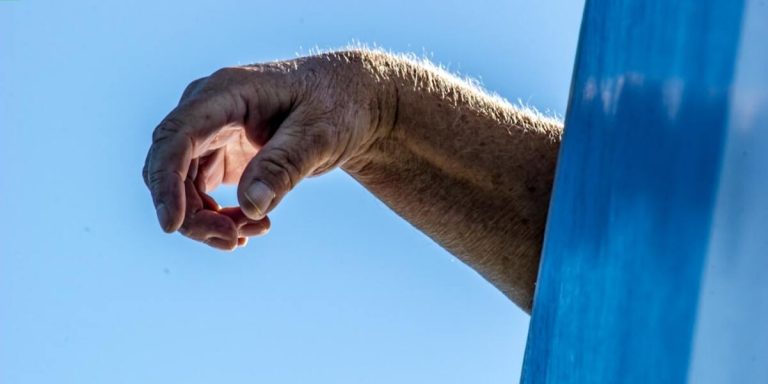Platelet Rich Plasma Treatment for Hair Loss: A Comprehensive Guide to Understanding the Science Behind It
Understanding the complexities of hair loss often leads to a journey exploring various treatment options, one of which is becoming increasingly popular for its promising results – Platelet Rich Plasma Treatment for Hair Loss. This method revolves around innovative scientific principles that tap into our body’s natural healing abilities and has gained significant attention in the healthcare industry.
Delving deeper into this phenomenon, we must understand what Platelet Rich Plasma Treatment actually entails. I will guide you through the process of concentrating these nutritive components from your blood and strategically re-injecting or topically applying them to your scalp to stimulate new hair growth.
While the concept may sound overwhelming at first glance, breaking down the underlying science helps streamline understanding this impressive advancement in managing hair loss effectively.
Did you know?
Did you know? Research indicates that Platelet Rich Plasma (PRP) treatment not only helps with hair regrowth, but also improves the thickness and quality of new hair strands – a double win for those battling hair loss.
Understanding Platelet Rich Plasma (PRP) Therapy for Hair Restoration
Platelet Rich Plasma (PRP) therapy has been emerging as a marvel in the field of hair restoration. Being an autologous treatment, it utilizes the body’s own growth factors found in one’s blood to stimulate follicular activity and promote hair regrowth. This innovative method is attracting more individuals who suffer from thinning locks or baldness.
With PRP therapy for hair loss, patients are not dependent on shampoos, creams or drugs anymore; rather they rely on their bodies’ intrinsic healing powers. The process involves drawing a small amount of patient’s blood which then gets spun down using a centrifuge to separate platelets rich plasma out – this contains concentrated amounts of proteins known as growth factors that play key roles in wound healing processes.
The extracted PRP is injected into areas of scalp experiencing significant hair loss or thinning. It enhances miniaturizing hairs by lengthening their growing period and thickening individual strands creating dense, lustrous head of natural looking human mane desired universally irrespective gender identity age ethnicity.
The Science Behind PRP Treatment and Hair Follicle Stimulation
So how does it work? The science behind PRP treatment and its impact on follicle stimulation is fascinating.
Firstly, to understand the relevance of platelets in this process, one needs to know their primary function within our bodies. Platelets are small blood cells that play a crucial role in aiding tissue repair and healing through clot formation at injury sites.
In PRP therapy, these same properties are harnessed towards enhancing scalp health and promoting much-needed growth.
Secondly we need to acknowledge what ‘plasma’ stands for – plasma equates to liquid gold! It’s essentially the medium that allows red blood cells, white blood cells and platelets circulate throughout your body.
Now here’s where science truly works wonders: When introduced into areas experiencing thinning or balding via injections made directly into such regions of scalp which stimulates better nutrient delivery as well as upping cellular activities necessary for healthy follicular functions—preventing inflammation-induced degeneration whilst also prompting new cycles consisting from active anagen period extending all way till resting telogen phase before starting over again!
Evaluating the Efficacy of PRP in Treating Alopecia
Platelet Rich Plasma (PRP) therapy is a cutting-edge treatment for hair loss that’s gaining popularity in the medical community and beyond. The core concept behind PRP revolves around utilizing one’s own blood, enriched with platelets, to stimulate natural growth factors.
So how effective is this revolutionary procedure, particularly in treating Alopecia? Let us delve into exploring its efficacy.
This supercharged plasma carries vital proteins known as growth factors which are then injected back into your scalp at targeted locations suffering from hair thinning or baldness due to alopecia.
The impact of these injections has been under meticulous clinical studies over recent years; they’re showing promising results by reactivating dormant follicles leading to new hairs sprouting up on previously barren terrain!
A study published in 2019 revealed noticeable improvement among patients who underwent four sessions spread out over eight weeks compared with those given placebo treatments.
Comparing PRP to Other Hair Loss Treatments
Understanding the realm of hair loss treatments can be a scintillating journey, teetering between scientific breakthroughs and old-fashioned remedies. Over the years, a myriad of techniques has surfaced to tackle this issue that affects millions worldwide each year. One revolutionary approach in contemporary times is Platelet-Rich Plasma (PRP) treatment for hair loss which capitalizes on the body’s innate healing power.
When you compare PRP with other conventional or widely acclaimed methods like Minoxidil (Rogaine), Finasteride (Propecia), and hair transplantation surgery, its distinctive differences and advantages become clear. PRP uses patients’ own blood platelets to stimulate natural growth factors against baldness, unlike artificial products such as Minoxidil or Finasteride that may have potential side effects due to their chemical compositions. This approach reduces risks substantially while increasing effectiveness.
PRP stands out for its non-invasive nature, unlike hair transplantation surgeries that many find daunting due to their pain and lengthy recovery periods. PRP offers a minimally invasive approach with shorter recuperation time and consistently delivers tangible results over time, making it an appealing alternative for individuals seeking efficient solutions with quick recoveries for hair loss issues.
How PRP Stands Against Minoxidil and Finasteride Therapies
Platelet Rich Plasma (PRP) therapy has created a niche for itself in the realm of hair loss treatments. Its comparison with two other popular therapies – Minoxidil and Finasteride – provides necessary insights into its effectiveness.
Starting off with PRP, this procedure involves drawing your blood and using centrifugation to separate platelets from other components. The concentrated plasma is then injected back into scalp areas affected by hair thinning or balding. As per recent studies, it promotes regeneration of hair follicles leading to improved growth and density.
It’s increasingly becoming an option for those who prefer natural solutions since it uses one’s own body materials instead of external chemicals.
Minoxidil on the flip side is a well-known over-the-counter medication applied topically onto the scalp twice daily. Also known as Rogaine, it works by increasing blood flow hence oxygen supply towards dying follicles which prolongs their life cycle thus promoting growth albeit temporarily only during application course.
Finasteride alternatively requires prescription because unlike topical minoxidil, you take these orally allowing them systemic action that inhibits enzyme 5-α-reductase responsible for converting testosterone into less friendly DHT causing male pattern baldness when present in high concentration.
Assessing the Benefits and Drawbacks of PRP Versus Hair Transplants
As we delve into the realm of hair loss treatments, two procedures often stand out: Platelet rich plasma treatment for hair loss and Hair transplants. Both methods have their unique benefits and drawbacks which impact the decision-making process.
PRP therapy or platelet-rich plasma involves injecting a concentration of your own platelets into areas affected by hair thinning. This technique holds reputation for spurring natural regeneration processes that accelerate growth.
Firstly, PRP is distinguishable due to its non-surgical nature. The procedure stands as minimally invasive compared to traditional surgical approaches like transplantation requiring incisions on the scalp.
Secondly, since it’s using one’s own blood component (platelet), chances are slim-to-nil when it comes to allergic reactions or issues related with mismatched donors – an advantage not offered by some alternative treatments such as transplantations reliant on donor grafts.
The Patient Journey: What to Expect from a PRP Procedure
Embarking on the journey to combat hair loss can seem daunting at first due to plethora of treatments available in 2023. Among these, Platelet-Rich Plasma (PRP) therapy emerges as a highly effective and scientifically backed method that has surged in popularity among individuals grappling with hair thinning or baldness.
Your PRP treatment for hair loss begins with an initial consultation where your healthcare provider will evaluate your medical history and current health status. This is crucial so they could better understand if you’re a suitable candidate for this specific procedure. They’ll explain what it entails, its associated benefits along potential risks involved which would equip you with informed consent before proceeding further.
During the actual session, blood will be drawn from one part of your body—typically the arm—and placed into a machine known as centrifuge. Your blood undergoes rapid spinning in this device to separate different components: red cells, white cells and plasma rich platelets containing growth factor proteins responsible for stimulating cellular regeneration while speeding up healing process- both vital functions when trying overcome patterned alopecia.
Pre-Treatment Preparation and Requirements for Candidates
Going for a Platelet-Rich Plasma (PRP) treatment requires some preparation, so let’s talk about what you need to do and the requirements candidates must meet. In recent years, PRP has emerged as an effective therapy for hair loss due to its healing properties derived from your own blood platelets.
Before you undergo platelet-rich plasma treatments for hair loss in 2023, you’ll typically follow several steps:
1. **Consultation**: The journey begins with an initial consultation where the doctor will assess if you’re a good candidate for PRP treatments.
2. **Medical History Check**: Your healthcare provider may perform medical evaluations or tests before starting off with any procedure that includes questioning on history related to any known diseases or conditions affecting your health including allergies and current medications being used.
The ideal candidates have realistic expectations when it comes to results they expect out of their therapy sessions; understand potential risks associated with this type of intervention; certain lifestyle factors also influence outcomes like diet habits, body mass index(BMI), nicotine use or drug abuse histories.
Post-Treatment Care and Expected Timelines for Results
Firstly, minimal care is require after the procedure, making it relatively easy for most individuals. The scalp may feel tender and slightly swollen due to the injections; however, these symptoms should subside within a few hours.
It’s advisable not to wash your hair immediately after treatment – wait until the next morning if possible. When washing or grooming your hair in subsequent days take extra caution as sensitivity might persist.
Avoid exposing your scalp excessively to sunlight and refrain from engaging in vigorous activities that may induce perspiration on the head area for at least two days post-treatment.
Next comes expected timelines for results: PRP treatments often work cumulatively with each session building upon previous ones stimulating enhanced growth over time.
Following these first noticeable signs of progress doctors recommend maintenance sessions every six months ensure continued success keep newly rejuvenated strands top form avoid returning pre-therapy conditions remember everyone different so individual result times vary patience key throughout process assess effectiveness accurately regularly liaise health provider discuss any concerns adjustments required journey back fuller richer mane worth wait!
Conclusion
In the journey of finding a solution to hair loss problems, platelet rich plasma treatment for hair loss serves as an excellent pit stop. It is science’s answer to nature’s challenge ,offering hope and results where generic solutions have failed.
Remember knowledge is power – knowing more about various treatments can help you make informed decisions regarding your health and well-being. Feel free to navigate around our website for other insightful articles on Hair Loss Treatments! Your very own trove of credible information awaits you at just one click away.







